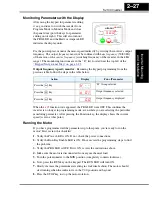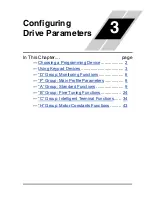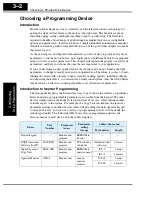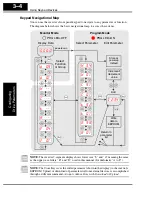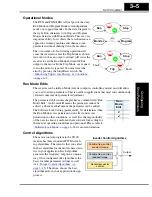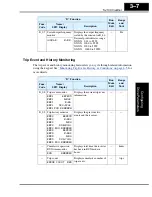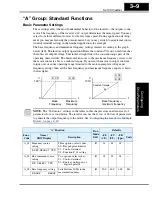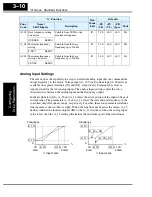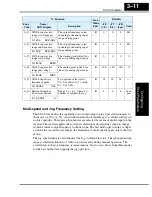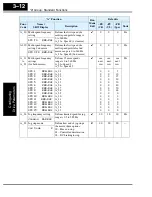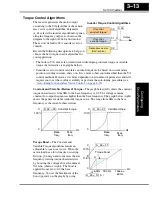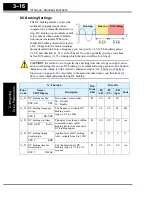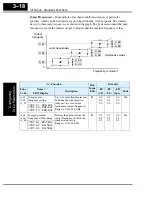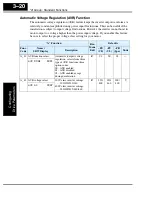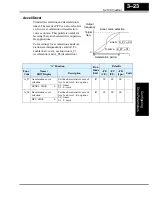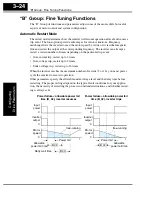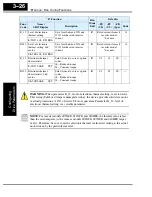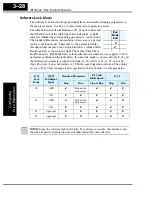
SJ100 Inverter
Conf
igur
ing
Dr
iv
e P
a
ra
m
e
ters
3–13
Torque Control Algorithms
The inverter generates the motor output
according to the V/f algorithm or the sensor-
less vector control algorithm. Parameter
A_44 selects the inverter algorithm for gener-
ating the frequency output, as shown in the
diagram to the right (A244 for 2nd motor).
The factory default is 02 (sensorless vector
control).
Review the following descriptions to help you
choose the best torque control algorithm for
your application.
• The built-in V/f curves are oriented toward developing constant torque or variable
torque characteristics (see graphs below).
• Sensorless vector control calculates an ideal torque vector based on current motor
position, winding currents, and so on. It is a more robust control method than the V/f
control methods. However, it is more dependent on actual motor parameters and will
require you to set these values carefully or perform the auto-tuning procedure (see
“Auto-tuning for Sensorless Vector Control” on page 4–35
).
Constant and Variable (Reduced) Torque –
The graph below (left) shows the constant
torque characteristic from 0Hz to the base frequency A_03. The voltage remains
constant for output frequencies higher than the base frequency. The graph below (right)
shows the general variable (reduced) torque curve. The range from 0Hz to the base
frequency is the variable characteristic.
Torque Boost –
The Constant and
Variable Torque algorithms feature an
adjustable
torque boost
curve. When the
motor load has a lot of inertia or starting
friction, you may need to increase the low
frequency starting torque characteristics
by boosting the voltage above the normal
V/f ratio (shown at right). The boost is
applied from zero to 1/2 the base
frequency. You set the breakpoint of the
boost (point A on the graph) by using
Output
Inverter Torque Control Algorithms
A 44
V/f control,
constant torque
V/f control,
variable torque
Sensorless vector
(SLV) control
00
01
02
Constant torque
A_44 = 00
V
100%
Hz
0
Variable torque
A_44 = 01
V
100%
Hz
0
Base
freq.
Max.
freq.
Base
freq.
Max.
freq.
f base =
60Hz
Torque boost
A_42 = 11
A_43 = 10 (%)
V
Hz
100%
11.8%
30.0Hz
6.0Hz
A
0

